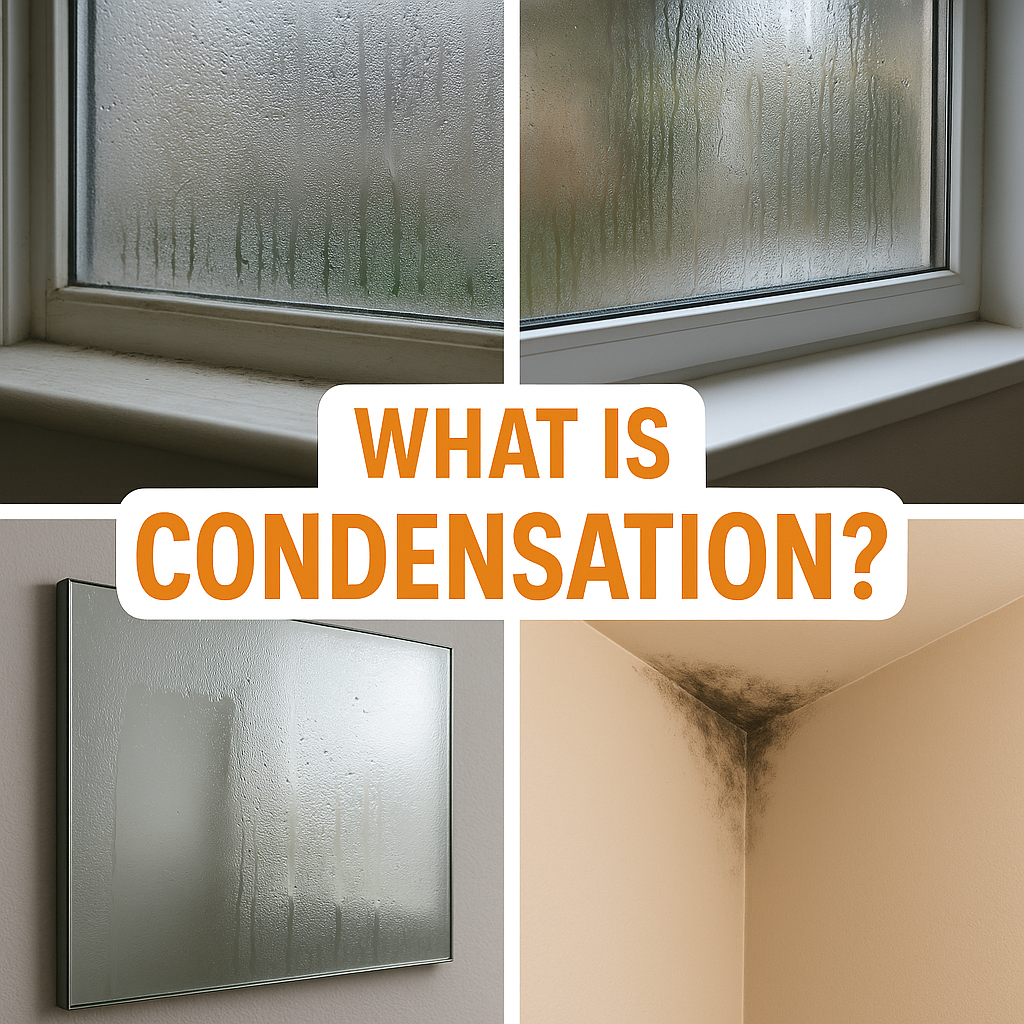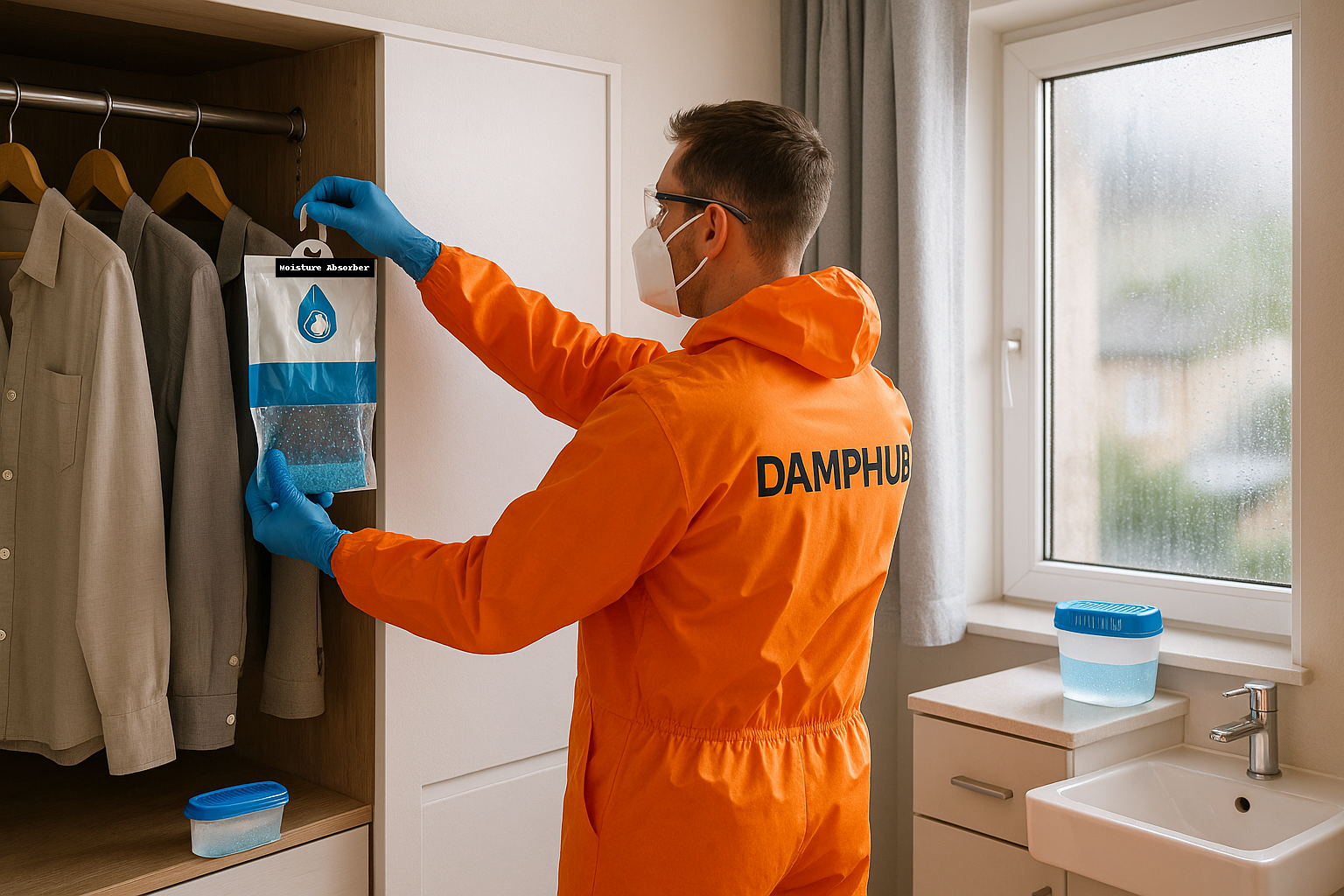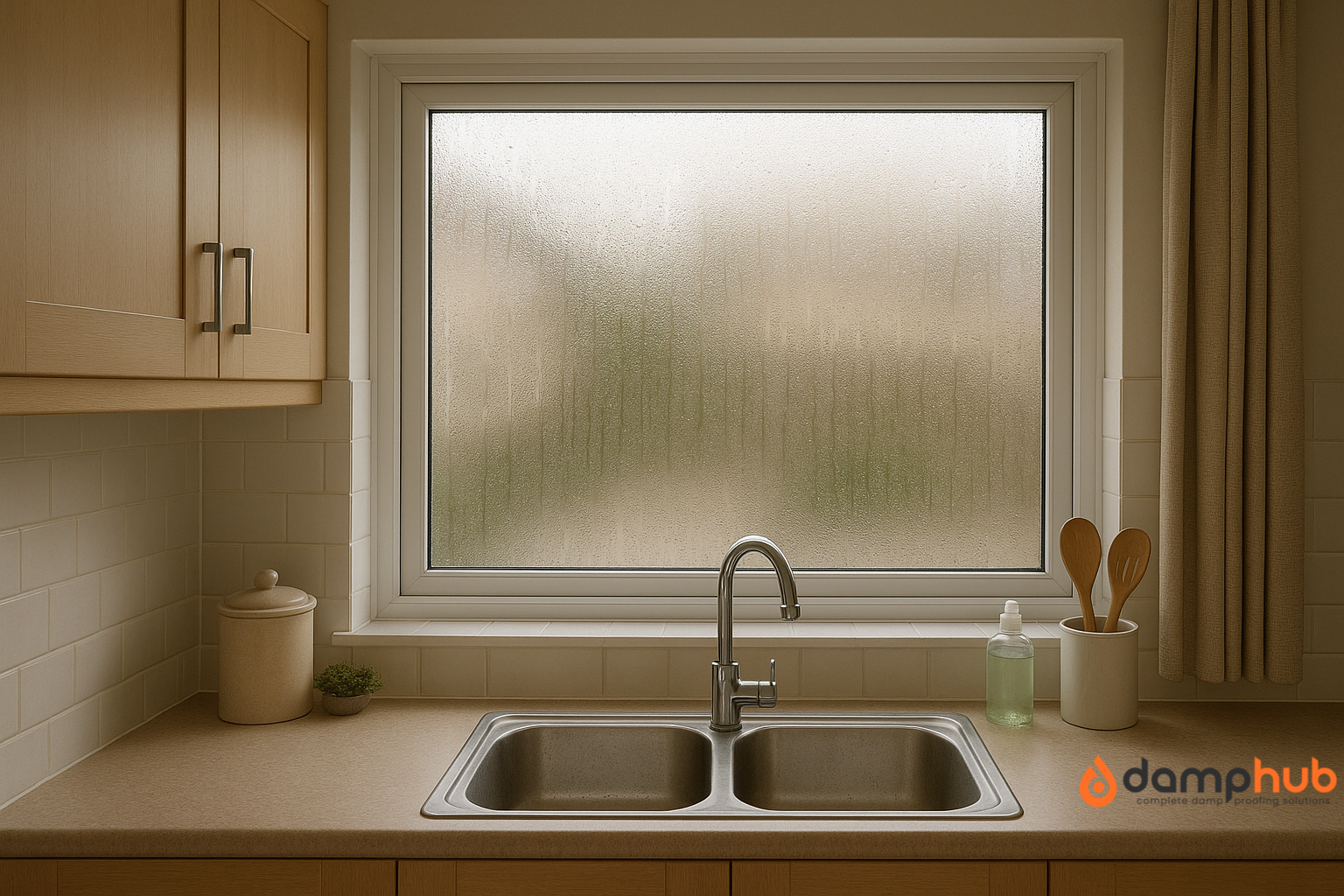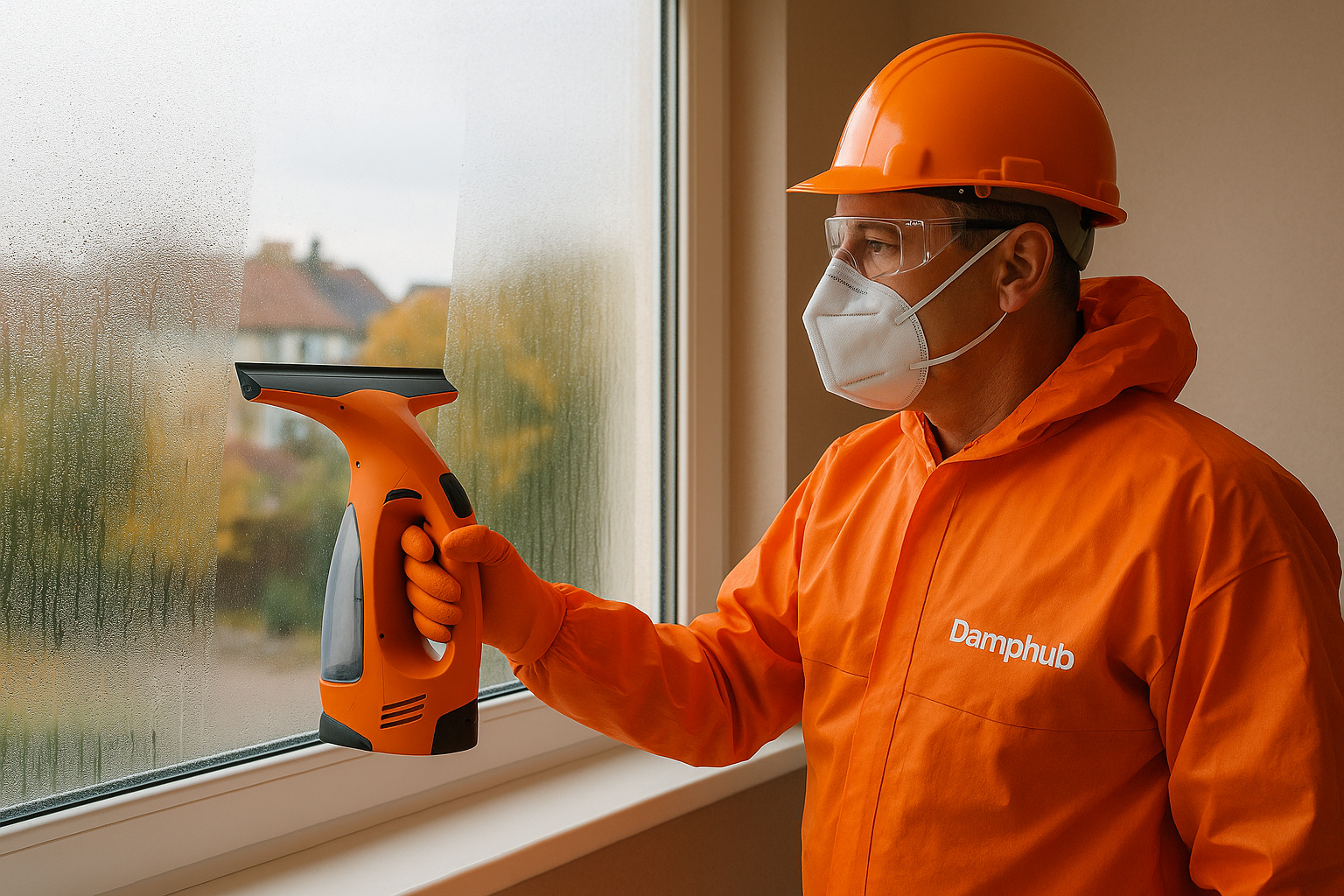
Walk into almost any UK home on a chilly morning, and you’ll spot it. Water droplets running down the inside of the glass, damp patches gathering on the sill, or maybe even a faint line of mould sneaking around the frame.
Condensation on windows is ridiculously common. So common that most people just shrug and reach for a cloth. But here’s the thing: it’s not just a cosmetic nuisance. If you ignore it, the problem quietly eats away at woodwork, peels paint, and leaves you with an unhealthy, musty-smelling room.
So, let’s tackle it properly. In this guide, we’re going to look at how to stop condensation on windows for good so that your home remains safe in all seasons. We’ll cover:
- What does condensation on windows look like?
- Why does it show up in the first place, and
- The practical condensation fixes that really work (and a few that don’t).
So, let’s start.
How Does Condensation On Windows Look Like?
You’ll know it when you see it. Tiny beads of water scattered across the glass, often worst in the mornings. Sometimes the droplets merge and run down in streaks, leaving the sill wet. Other times, the glass looks hazy, almost fogged up.
Single-glazed windows usually get it worst — the whole pane might be damp. Double glazing tends to collect it around the edges. And if you notice moisture trapped between the panes of double glazing, that’s bad news. It means the seal’s blown and the window unit isn’t doing its job anymore.
Left unchecked, that innocent little patch of damp can lead to mould. Black specks creep across the sealant, paint starts bubbling, and wood begins to soften. So spotting it early and acting on it matters more than most people realise.
What Causes Condensation On Windows?
Here’s the simple science bit: condensation happens when warm, humid air hits a cold surface. The air cools, can’t hold all that moisture anymore, and it dumps the excess as water droplets. Windows are prime targets because glass loses heat faster than walls.
But what’s pumping all that moisture into the air?
- Normal daily life. Cooking, boiling a kettle, taking a shower, drying washing indoors, even just breathing. A family of four can release litres of water vapour into the house every single day.
- Poor ventilation. If the damp air has nowhere to go, it lingers and eventually ends up on your windows.
- Cold spots. Single glazing or older frames exaggerate the problem by staying colder.
- General humidity. Houses without extractor fans, trickle vents, or regular airing build up moisture quickly.
So it’s not that your windows are “causing” condensation. They’re just where the issue shows up.
What Does Condensation On The Window Mean?
At its core, condensation on your windows means your home is holding onto more moisture than it can comfortably deal with. The water in the air is finding the coldest surface and parking itself there.
That leads to a pretty common question: Does condensation on windows mean the house is too cold?
Not necessarily. A cold house can make it worse, because cooler glass attracts more moisture. But the real driver is humidity. Even a warm home can have heavy condensation if there’s poor ventilation and too much water vapour floating around.
It’s less about blaming the thermostat and more about balancing three things: warmth, airflow, and humidity.
How Much Window Condensation Is Normal?
A little condensation on windows is completely normal in UK homes, especially during colder months. Single-glazed windows are most likely to fog, but even double-glazing can show a light haze or small droplets along the edges or sill. Usually, this is nothing to worry about—it’s just warm, moist air meeting a cooler surface.
The important part is knowing when it’s too much. Occasional morning mist that clears by midday? Normal. But constant dripping, water pooling on the sill, or black mould appearing? That’s a sign of high humidity, poor ventilation, or uneven heating. Kitchens, bathrooms, and bedrooms are hotspots, but if living rooms or hallways stay damp, it’s a warning that airflow, insulation, or heating may need attention.
How Do You Stop Condensation On Windows?
Right — onto the part you’re actually here for. How to stop condensation on windows isn’t about one magic trick. It’s a mix of habits, small fixes, and sometimes a bit of kit.
Improve Ventilation
- Open trickle vents if you’ve got them. If not, they can usually be added.
- Run extractor fans in kitchens and bathrooms.
- Keep internal doors closed when cooking or showering so the steam doesn’t spread through the house.
- Crack open windows for short bursts — even in winter. Ten minutes is often enough.

Reduce Moisture Production
- Dry clothes outside when you can. If not, use a vented tumble dryer.
- Cover pans with lids while cooking.
- Avoid drying clothes on radiators, which pump out loads of moisture.
Keep A Steady Temperature
- Homes that are heated steadily (even at a low level) suffer less condensation than those blasted with short bursts of heat.
- Insulated curtains or blinds can help stop windows from becoming such cold surfaces.
- Upgrading from single to double or triple glazing is a bigger investment, but it makes a real difference.
Use Moisture Control Tools
- A dehumidifier in problem rooms can be a lifesaver.
- Moisture absorbers (the little tubs of crystals) work well in cupboards and small spaces.
- A hygrometer is worth a few quid — it shows your humidity levels so you can see if you’re making progress.
Pro Tip
If you do invest in a portable dehumidifier, don’t tuck it away in a corner. Leave it somewhere central so the air can move through it properly. You’ll notice a much bigger difference in how quickly it clears moisture from the room.
When you get into these habits, condensation starts becoming an occasional nuisance rather than a daily headache.
Should You Wipe Condensation Off Windows?
Absolutely. Letting the water sit gives mould a perfect little breeding ground. You’ll see it first on silicone sealant and wooden frames, then spreading further if ignored.
Wipe it off with a cloth, paper towel, or a window vac if you’ve got one. It takes seconds and stops moisture from soaking into sills or frames.
But — and this bit matters — wiping is a band-aid, not a cure.
Good To Know
If all you do is mop up the water without tackling the cause, you’ll still wake up to damp windows every day. Think of it like putting a bucket under a leak but never fixing the roof.
Final Thoughts
Condensation might seem harmless — a bit of fogged glass you can wipe with your sleeve — but it’s your home quietly waving a red flag. Too much moisture, not enough airflow, and surfaces staying cold. Leave it alone, and it turns into mould, peeling paint, and timber damage.
The fix isn’t complicated. Once you understand how to stop condensation on windows, it comes down to habits: ventilate, reduce moisture, keep the temperature steady, and step in quickly if you see problems. Add tools like a dehumidifier if you need them, and if your glazing is ancient, upgrading will definitely help.
Do that, and instead of waking up to dripping windows every morning, you’ll have a house that feels fresher, healthier, and a whole lot more comfortable.
Condensation On Windows: Answering Common Questions

-
Does Condensation Mean I Need New Windows?
Not always. If it’s forming on the inside of the glass, it’s usually more about high humidity or poor ventilation. The only time you really need new windows is if condensation shows up between the panes of double glazing. That’s a failed seal, and the unit has to be replaced.
-
Will New Windows Help with Condensation?
Yes, to some degree. Modern double or triple glazing is warmer at the edges, so you’re less likely to see heavy condensation. But if your house has no ventilation and high humidity, new windows won’t be a silver bullet.
-
Is It Normal For My Windows To Have Condensation?
A little, yes. Bedrooms often fog up overnight when the door’s shut and everyone’s breathing in the same space. What isn’t normal is constant dripping, soggy sills, or mould forming. That points to a bigger moisture issue.
-
Can Old Windows Cause High Humidity?
Not directly. Old windows don’t make water vapour. But because they’re colder and sometimes draughty, they’re prime spots for condensation to settle. Plus, many older frames don’t have trickle vents, which means less natural airflow.
-
Will Opening Windows Get Rid Of Condensation?
Yes. It’s one of the simplest fixes. Even cracking a window for ten minutes swaps humid indoor air for drier outdoor air. You’ll often see the glass clear within minutes.
-
How Long To Open Windows To Reduce Condensation?
You don’t need to leave them wide open for hours. Ten to fifteen minutes of proper airing in the morning works wonders. Combine that with extractor fans when you’re cooking or showering, and you’re set.
Try This: Instead of leaving a window slightly open all day (which just makes the house cold), throw it wide open for ten minutes in the morning. That short, sharp blast of fresh air clears moisture more effectively and wastes less heat.
-
What Can I Rub On Windows To Stop Condensation?
There are a few temporary fixes you can apply directly to glass:
– Anti-condensation sprays or creams: These form a thin protective layer so water doesn’t bead up.
– A light smear of washing-up liquid: Surprisingly effective for a quick DIY fix, it leaves a barely-there film that reduces droplet formation.
– Vinegar solution: Wiping windows with a 50/50 mix of white vinegar and water can also help, though it won’t replace proper ventilation.
Remember: these treatments slow condensation—they don’t remove the underlying humidity problem. Pair them with airflow, dehumidifiers, and moisture-reducing habits for real results.






